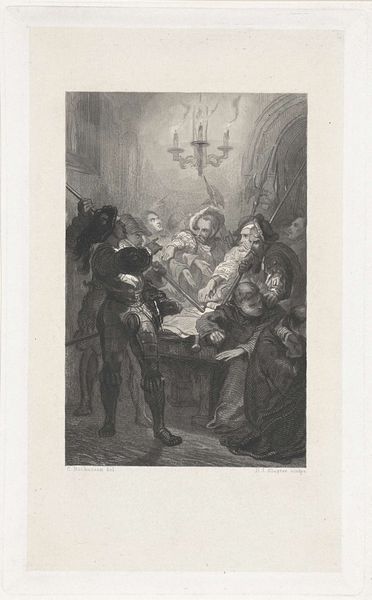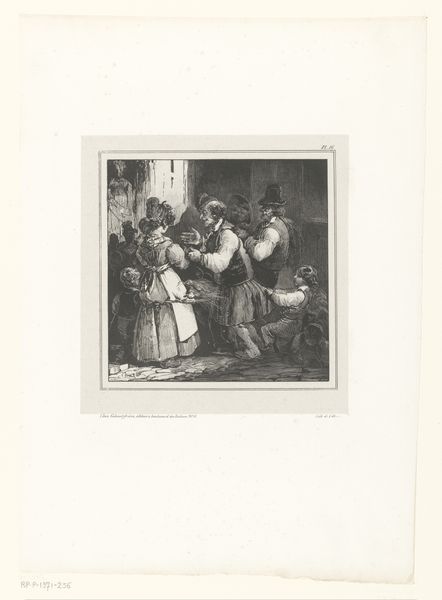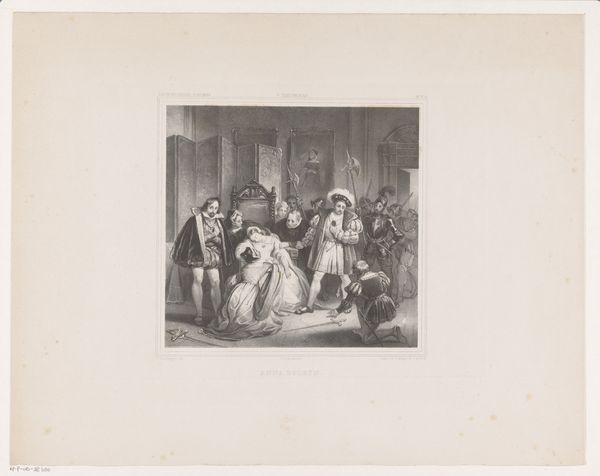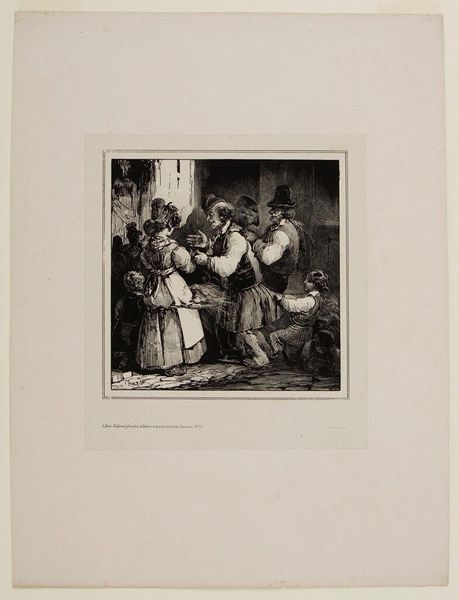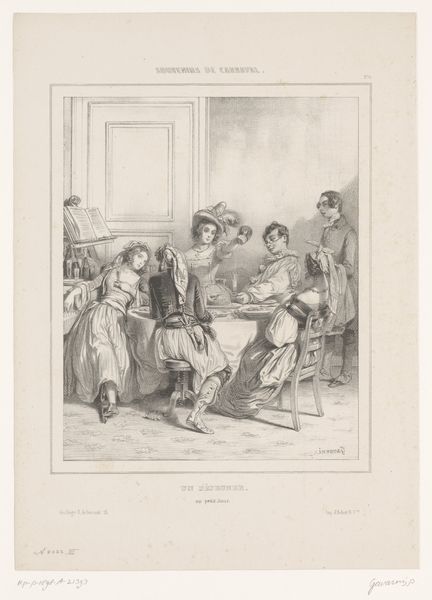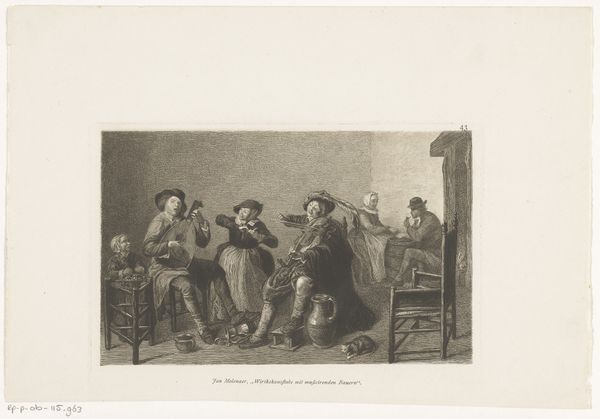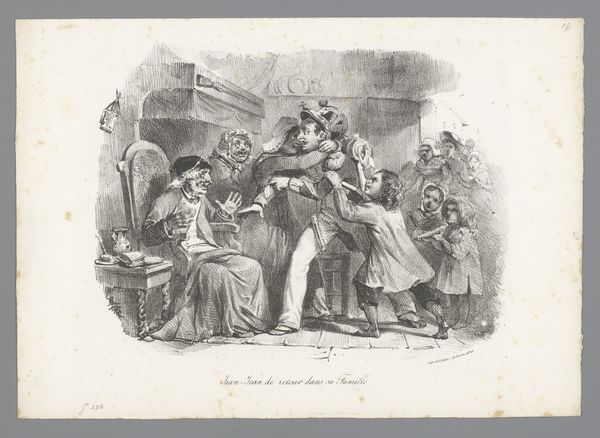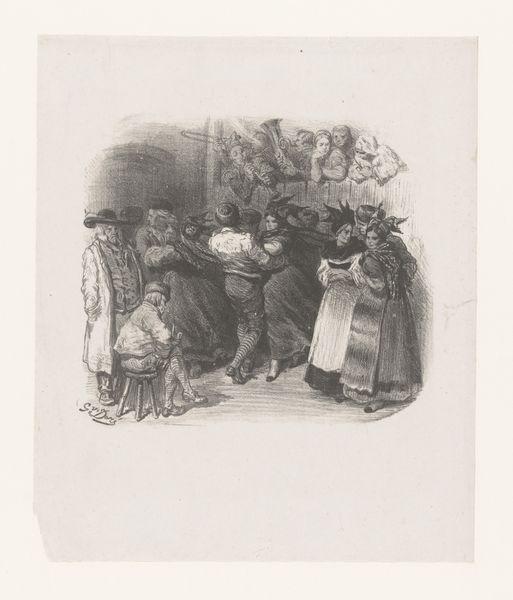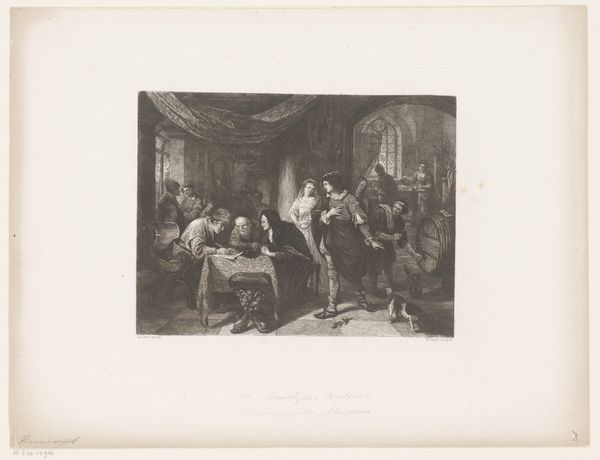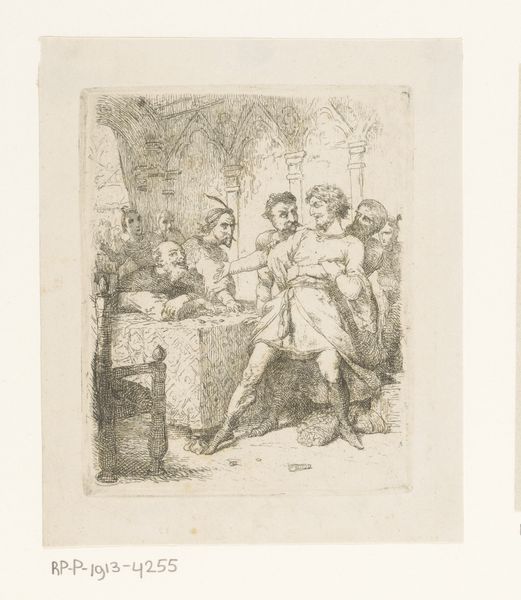
print, engraving
#
narrative-art
# print
#
figuration
#
genre-painting
#
history-painting
#
engraving
Dimensions: height 126 mm, width 103 mm
Copyright: Rijks Museum: Open Domain
Editor: Here we have "Bruno aan de dobbeltafel," or "Bruno at the Dice Table," an engraving from 1857 by Johan Bernhard Wittkamp. It's incredibly detailed and seems to depict a rather dramatic scene. What's your take on this, what are your observations about this piece? Curator: It strikes me as a charged moment, rife with social commentary. The gathering, likely an exclusively male space, and the act of gambling can both point to power dynamics and risky behaviours sanctioned, or perhaps even celebrated, within a specific social context. Consider how the visual narrative, frozen in time, also implicates its audience. What norms are being reproduced or challenged here, do you think? Editor: I see what you mean. The expressions are intense, there's definitely a story being told, but the finer details escape me. How might the historical context shape our interpretation? Curator: Absolutely crucial! Mid-19th century engravings like this often romanticized or critiqued aspects of contemporary society, albeit through historical or fictional lenses. Gambling, for example, was frequently seen as both a leisure activity and a potential source of ruin, especially for men of certain classes. The lack of women present reinforces a system of wealth and privilege. Have you considered whose stories are validated here? Editor: It's like looking at a tiny, etched stage! This really does offer a lot of context about class and social behavior, just hidden beneath the surface. Curator: Precisely! By examining the work through a lens that considers gender, class, and power, we move beyond simply appreciating its aesthetic qualities and begin to unpack its deeper cultural significance. And consider that by dissecting history, we are questioning if anything has changed or shifted from that time period, or if we see reflections of these same dynamics in today's world. Editor: Wow, I hadn't thought of it that way before! Thank you, it has made me think more critically about the artwork's social message. Curator: My pleasure, and remember that with these approaches, art acts as both a reflection of the past and an important springboard to consider our current culture.
Comments
No comments
Be the first to comment and join the conversation on the ultimate creative platform.
